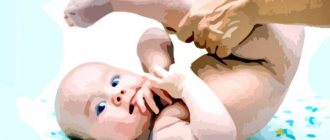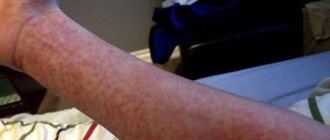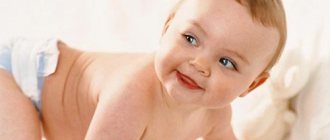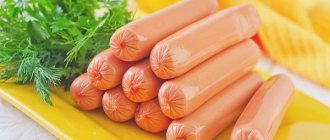Is flour good or bad for children?
Before I started feeding my daughter complementary foods, I read a bunch of articles, opinions of doctors and nutritionists. Phrases like “don’t give your child anything made from flour, potatoes and corn are full of calories!” were very common. But it’s not flour products that you need to be afraid of, but the additives to them!
Flour products can be very different. As a rule, we mean by them various buns, baked goods, etc. They may contain large quantities of fats in the form of sour cream, butter, margarine. All kinds of confectionery creams are prepared from them. They are also the ingredients we like to season pasta and dumplings with. Eating them really doesn't do any good.
At the same time, some confectionery products can be really useful and necessary for a child - children's cookies will be a good helper for a baby to acquire chewing skills and develop motor skills. In addition, it will give a good boost of energy and vivacity... The child is in constant motion, it is difficult for him to sit still, and even in the rare seconds of sitting on a chair, he constantly drums his legs. With such high activity, he needs a lot of energy.
Children's cookies and bread are a good source of carbohydrates, as well as B vitamins, which have a calming effect and improve mood. They contain a large amount of plant fiber, which makes it very easy to get enough of this type of food.
Everything is useful in moderation! Adults and children are now suffering from obesity, but we shouldn’t equate them. No pediatrician would recommend putting a very young child on a low-carbohydrate diet. Sweet treats are not bad, but not when there are a lot of them and when the baby is only a couple of months old. And it’s really worthwhile to diversify his menu, especially since it’s not only tasty, but will also make him very happy.
Both quantity and quality
Having talked about whether it is possible to give a child bread, about its benefits and harms, having decided that there is no need to overfeed the child with bread and try to give bread after the main course (for example, as the basis for a sandwich), it is necessary to resolve the question of what bread is healthier. This is a very important issue for the child's health. White bread, although tasty, not only may not be healthy (after various treatments, white flour may no longer contain a trace of the same vitamins, but only gluten and starch), but it is also dangerous because the child very quickly gets used to sweets. products - and flour for white breads is always refined. While your child’s taste has not yet been formed, you should not teach him to eat sweets. When deciding which bread is healthier, it is better to make a choice in favor of rye bread, bread with bran, etc.
And by limiting children’s intake of bread, there is no need to worry that the baby will not receive some necessary nutrients and that some principles of healthy eating will be violated. Porridge is not inferior to bread in terms of nutritional value and content of nutrients.
How it was with us
I admit honestly - I love flour. And my daughter took after me (she’s the one greedily biting into the flatbread in the photo))) But we weren’t always on friendly terms with bread.
I love to bake, although people in my household and some parts of my body don't always respond positively to baking. But, when the time came to introduce flour into our daughter’s complementary foods (traditionally for us this is 8-9 months, when there are usually more than 2 teeth), I was deathly opposed to “Give the child a cookie!” My resistance was justified simply: firstly, at that time my child received the required amount of carbohydrates from suddenly favorite cereals and fruits (for example, baked apples); secondly, there is no need for an extra strengthening product in the diet - the period of colic and wild constipation was still alive in memory. All my arguments were presented to the pediatrician, the doctor agreed, and the conciliatory age for liver-bread complementary feeding became one year.
But in the life of my daughter, like most children, there is a destructive element - grandmothers. When my daughter was 9 months old, I went to earn an MBA degree in the evening department and for the whole evening my baby remained under the supervision of a grandmother or even two. After a couple of months, it became clear to me that the child knows what bread is. And cookies. And he looks at me and the cookies with hungry eyes. I had to give up. But then another problem arose - what exactly do we eat?
There were no questions with regular bread, but after reading the ingredients on one of the packages of “children’s” oatmeal cookies brought by my mother-in-law, I realized it was time to bake it myself.
This is how oatmeal cookies appeared in our lives, adapted by me for the baby. I would like to share the recipe for this cookie with you, dear mothers of Pandaland.kz.
Children's diet and bread
Pediatricians recommend consuming grains up to 5 times a day; the child’s menu should consist of cereals and various types of bread. The product is perfectly balanced because it includes:
- carbohydrates – 60-65%
- vegetable proteins – 15%
- fats – 25-30%
Bread is made from wheat, rye, oats and barley, which are sources of:
- useful microelements
- vitamins
- starch, which is transformed in the body into glucose
Cereals contain gluten, which causes allergies, so experts advise not giving your child products made from them until 7 months.
It is necessary to maintain the correct ratio of black and white varieties in the baby’s diet:
- At 7 months, the baby is given a soft crust of wheat bread, which he will happily gnaw on if the baby tolerates complementary feeding well. For dessert, we offer delicate baby cookies that dissolve easily with saliva and leave no crumbs.
- From 12 to 18 months, white bread is included in the menu in the amount of 50 g, and black bread - no more than 10 g.
- From 18 months to 3 years, the child is given 60 g of white bread and 30 g of black bread. A small snack in the form of a piece of black bread soaked in olive oil will be a good start to the day. In this form, it is useful if the baby suffers from constipation. If you are allergic to at least one of the components, it is better to exclude the dish, despite its benefits.
The counters of modern stores offer a wide range of bakery products that mothers should navigate.
To produce the white variety, wheat flour is used - and the more it is crushed, the fewer vitamins the finished product contains.
There is no benefit from butter buns, except for excess weight, so it is not advisable to include them in complementary foods. You cannot give fresh baked goods to your child - allergies are unlikely to occur, but fermentation processes in the intestines will be ensured.
Crisps and crackers are low in calories and high in fiber, so they are recommended by pediatricians for well-fed toddlers.
The dietary variety is baked from oat or soy flour with the addition of sesame seeds and pumpkin seeds. Complementary feeding does not allow exposure to this variety, and the baby may develop an allergy to the additives.
Rye bread contains a maximum of vitamins and fiber, which makes it the healthiest of all varieties. It is absorbed worse than others; it is not recommended to give it to children under 2 years of age.
When purchasing, you need to pay attention to the quality of the product: it must be of the correct shape, smooth, and without traces of soot. White and black varieties should be stored separately for no longer than 48 hours.
What do we need?
- 200 g butter at room temperature
- 50-150 grams of sugar - depends on how much you like sweets and what additives you put in the cookies
- 2 eggs
- 150 g oat flakes
- 2 tsp baking powder
- 150-200 g flour
- Additives: nuts, raisins, dried apricots, prunes, honey, sesame seeds... whatever your heart desires and in the quantities desired (I usually add a handful of finely chopped raisins or dried apricots).
- You can add spices: a pinch of cinnamon, nutmeg, vanilla... as desired.
- You can also add chocolate chips, but this is no longer for kids...
Only better
You need to choose bread for your baby very carefully. Buy only factory-made baked goods in branded packaging. Bread of normal quality has the correct shape, there are no dents on it, it is elastic (after pressing it easily returns to its original form). If the bread is wet inside, it is better to make crackers out of it.
Bread baked at home is highly valued by nutritionists. It can be made from corn and oatmeal, add cottage cheese, pumpkin, zucchini, apple and use a minimal amount of sugar and salt. Typically, the main ingredients are wheat flour, boiled water, yeast and olive oil. Egg yolk is used to lubricate the surface of bread, but if you are allergic to eggs, it is better not to do this. Usually homemade bread is allowed to be given to children after one year.
What are we doing?
1. Grind butter with sugar.
2. Add eggs and mix.
3. Grind the oatmeal a little in a blender or mortar, add to the eggs and butter, and mix.
4. Add baking powder and flour, knead a not very stiff dough.
5. Cover the bowl with the dough with film and put it in the refrigerator for 1 hour (so that the flakes “swell” and become softer).
6. Line a baking tray with baking paper and heat the oven to 180°C.
7. We tear off small pieces of the dough (after refrigeration it is hard and practically does not stick to your hands), roll it into balls and place them on a baking sheet, taking into account that after baking the balls will “spread”.
8. Place the baking sheet in the oven and bake for 15-20 minutes.
Ready cookies without additives or with the addition of nuts, after cooling, become crumbly and crispy, with additives (like raisins) they remain soft.
And a few more points of “flour” complementary feeding, tested by me personally:
- About the basics - do not leave the child unattended alone with the bread, especially if the baby is still very small, do not let an older child run around with the bread/cookies. The child may inhale the crumbs, choke...
- If you buy baby cookies for your child, carefully read the ingredients. Ingredients like E, thickeners, dyes and anything that has the prefix “identical to natural” should not be in baby food.
- Take your time! On the packaging of baby cookies (as well as any baby food) it is written that they can be given to children from almost three months. As a marketer and the wife of a lawyer, I can say that this is a trick of the manufacturer and he insured himself in small print at the bottom of the label, where it says something like “the fact that this can be given to children from three months old, we took from the WHO standards for children on artificial, insufficient or lack of nutrition at all.” Before you start giving the product to your child, assess the situation with the gastrointestinal tract and consult a doctor.
- Until the age of three, children are not recommended to be given rye and freshly baked white bread, since the child’s enzyme system at this age is not yet sufficiently formed and is not able to break down incoming oligosaccharides and gluten. But this only applies to the soft core of the bread.
Baby menu
Nutritionists recommend starting your acquaintance with baked goods with a savory cracker. In the meantime, the baby is gnawing on it, watch him carefully, as he may choke on dry crumbs. Therefore, it is better to pre-soak it in milk. Crackers with milk form a suspension in the stomach, which has a beneficial effect on the mucous membrane and is easily digested.
Dry products for adults (dryers, biscuits, crackers) are best offered after two years. However, you need to remember about all sorts of unhealthy additives that are present in these products - they can cause health problems for the child.
Children's cookies are baked from butter dough, which means you should not give them to your baby too often; it is enough to do this twice a week, 1-2 pieces. Cookies also contain gluten, which causes an allergic reaction in some children. Cookies can be dissolved in liquid porridge, milk, yogurt.
But do not forget that this will increase the calorie content of the product, so it is better not to give such dishes to children prone to obesity. Sushi is a favorite treat for children. They help with teething by soothing itchy gums. Baby dryers are soft, they do not crumble like crackers, and therefore are less dangerous.
The composition of dry bread is similar to white bread, as it is made from premium wheat flour. But they are healthier because they contain a lot of copper and manganese. And drying is a storehouse of B vitamins that strengthen the nervous system.
Biscuits are also useful for children. This is a low-calorie and unsweetened dry puff-type product prepared using the sponge method. It contains premium flour, yeast, baking powder and food additives. Biscuits should not contain sugar. According to technology, there should be no fat, but some types do have it, so read the ingredients carefully. If there is nothing else in it besides flour, yeast, and baking powder, then these are those same biscuits - nutritious, but not high in calories.
Pediatricians allow babies to be given crackers and baby cookies from about 7 months, and wheat bread from 9 months. Start with 5 g per day, then increase to 10-30 g. When the baby gets used to the new food and you are sure that his body tolerates bread without problems, the amount can be increased to 80 g, including dry bread, biscuits, and cookies.










